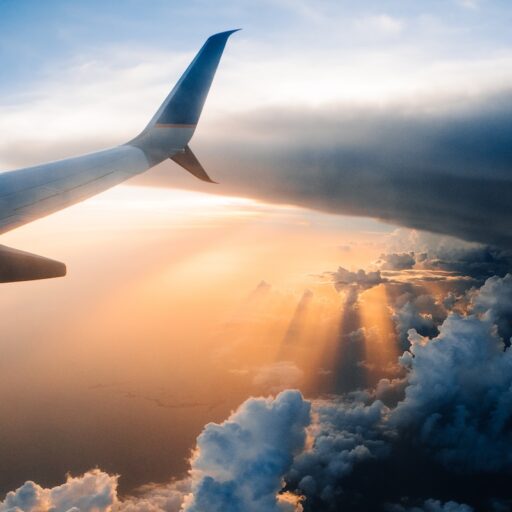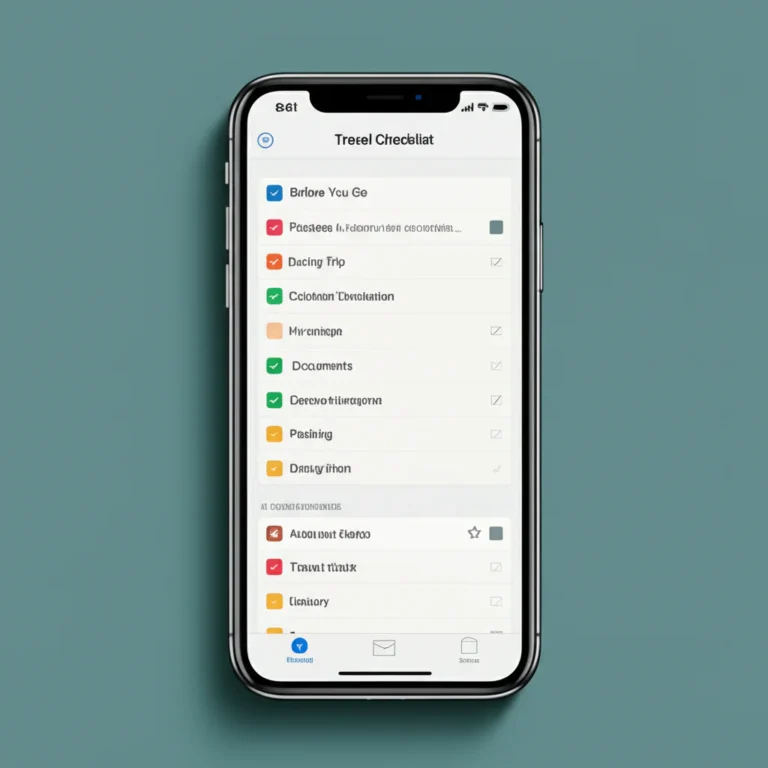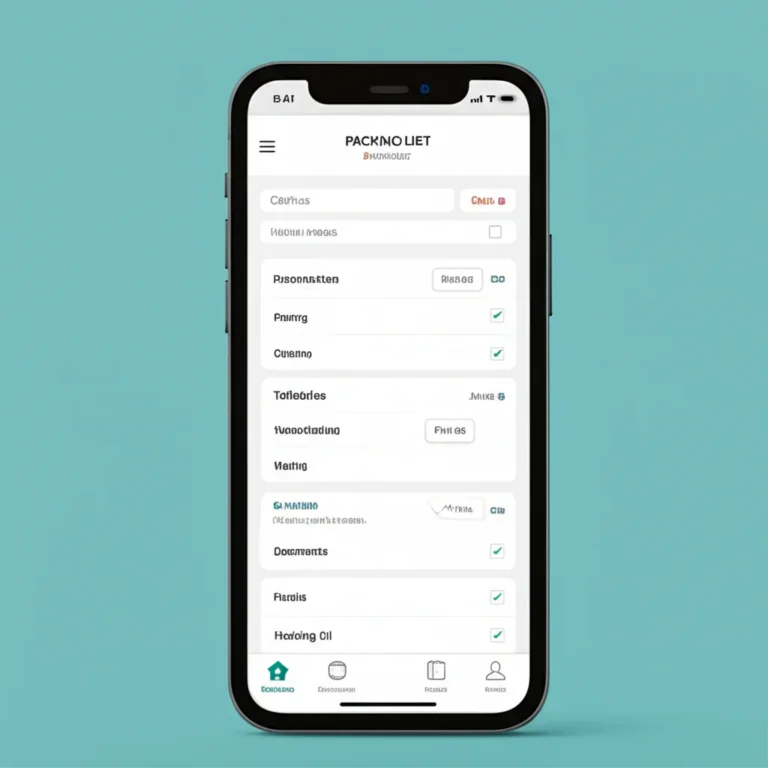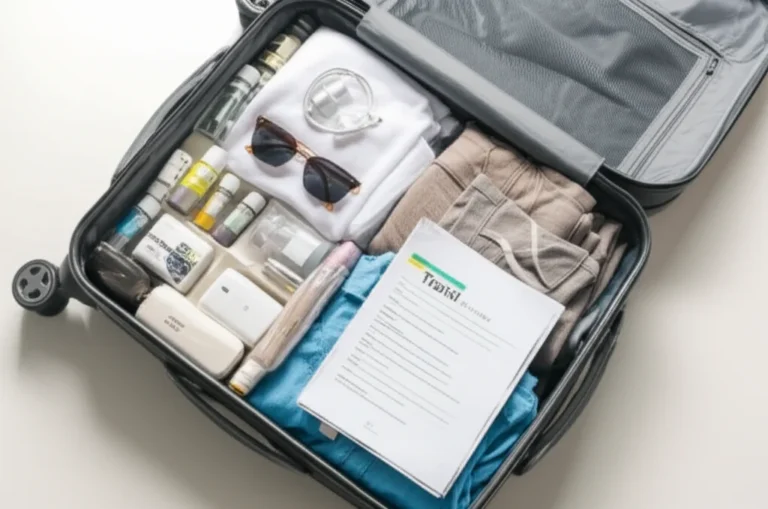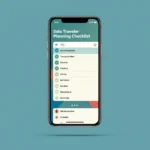Support our educational content for free when you purchase through links on our site. Learn more
15 Must-Pack Extras for Every Trip: Snacks, Meds & First-Aid (2025) 🧳
Picture this: you’re halfway through a scenic hike, your stomach starts rumbling, and the nearest snack bar is miles away. Or worse, a sudden headache strikes mid-flight, and the flight attendants are out of painkillers. These are the moments when having the right additional items like snacks, medications, and a first-aid kit can turn a potential travel disaster into just a minor hiccup. At Travel Checklist™, we’ve learned that packing these often-overlooked essentials is the secret sauce to stress-free adventures.
In this comprehensive guide, we’ll reveal 15 must-pack extras that go beyond your typical suitcase staples. From the perfect energy bars to the smartest first-aid kit brands, and insider tips on organizing your travel bag for quick access, we’ve got you covered. Plus, we’ll share real traveler stories that highlight why these items aren’t just nice-to-haves—they’re travel lifesavers. Ready to pack like a pro and never get caught off guard again? Let’s dive in!
Key Takeaways
- Always pack a well-rounded first-aid kit tailored to your trip, including wound care, OTC meds, and emergency tools.
- Bring enough prescription medication plus extras, keep them in carry-on luggage, and carry a doctor’s note for international travel.
- Smart snacks like granola bars, nuts, and dried fruit keep your energy up and save you from overpriced airport food.
- Organize your essentials in separate pouches or packing cubes for easy access and mess-free travel.
- Customize your packing list based on your travel type—adventure, business, or family trips all have unique needs.
- Use tech tools and apps like Medisafe for medication reminders and American Red Cross First Aid for emergency guidance.
👉 CHECK PRICE on:
Table of Contents
- ⚡️ Quick Tips and Facts on Packing Extra Essentials
- 🧳 The Ultimate Guide to Packing Snacks for Every Trip
- 💊 Must-Have Medications and Health Supplies to Pack
- 🩹 First-Aid Kits: What to Include and Why They Matter
- 🔢 10 Additional Items You Didn’t Think to Pack But Should
- 🌍 Packing for Different Travel Types: Adventure, Business, and Family Trips
- 🛒 Best Brands and Products for Travel Snacks, Meds, and First Aid
- 🎒 How to Organize Your Travel Bag for Easy Access to Essentials
- 🧠 Insider Tips from Frequent Travelers on Packing Smart
- 🌡️ Handling Special Needs: Allergies, Prescriptions, and Medical Devices
- 🧭 Emergency Preparedness: Beyond the First-Aid Kit
- 📱 Apps and Tech Tools to Manage Your Meds and Health on the Go
- 🧳 Packing Mistakes to Avoid: Lessons Learned from Travel Fails
- 📝 Conclusion: Your Ultimate Packing Checklist for Peace of Mind
- 🔗 Recommended Links for Travel Essentials and Health Safety
- ❓ Frequently Asked Questions About Packing Extra Items
- 📚 Reference Links and Resources for Travel Preparation
Here is the main content for your blog post.
⚡️ Quick Tips and Facts on Packing Extra Essentials
Welcome, fellow globetrotters, to the Travel Checklist™ inner circle! You’ve nailed the basics—clothes, passport, toothbrush. But what about the unsung heroes of a smooth trip? We’re talking about the snacks that save you from “hanger,” the medication that nips a headache in the bud, and the first-aid kit that turns a minor mishap into a non-event. Before we dive deep, here are some rapid-fire truths to get your packing brain in gear:
- ✅ Always pack more than you think you’ll need when it comes to critical medications. The Montgomery County, OH, official website wisely advises you to “Keep a 7-day supply of all medications you take on a regular basis.”
- ✅ Snack smart, not just hard. The National Park Service (NPS) recommends no-cook, high-energy snacks like trail mix, nuts, and granola bars to keep your energy high.
- ✅ Your first-aid kit is personal. A pre-made kit is a great start, but as the NPS suggests, you should “modify it to fit your trip and your medical needs.”
- ✅ Liquids are tricky. Remember the TSA’s 3-1-1 rule for carry-ons: 3.4 ounces (100 milliliters) or less per container, in 1 quart-sized bag, 1 bag per passenger. Medically necessary liquids are an exception, but you must declare them.
- ❌ Don’t assume you can buy it there. Pharmacies in other countries may have different brands, regulations, or require a local prescription. This is especially crucial for those on our International Travel Checklists.
- Fact: Did you know that according to a survey, over 40% of travelers have experienced a minor medical issue on vacation that required treatment? Having a well-stocked kit isn’t just cautious; it’s statistically smart!
🧳 The Ultimate Guide to Packing Snacks for Every Trip
Let’s be honest, the right snack at the right time can feel like a superpower. It can rescue you from an overpriced airport kiosk, fuel a grueling hike, or pacify a restless child. But not all snacks are created equal.
For the High-Flying Traveler ✈️
Airport delays are a fact of life. Your secret weapon? A stash of TSA-friendly snacks.
- What to Pack: Solid foods are your best friends. Think granola bars (Kind Bars or Clif Bars are our go-tos), dried fruit, nuts, crackers, and sandwiches.
- What to Avoid: Anything liquid or spreadable over 3.4oz. That means saying goodbye to large tubs of yogurt, hummus, or peanut butter in your carry-on. Pack them in your checked bag if you must!
- Pro Tip: Bring an empty, reusable water bottle like a Hydro Flask or Nalgene. You can fill it up post-security and stay hydrated without paying a premium.
For the Road Warrior 🚗
The beauty of a road trip is the freedom… and the unlimited snack baggage allowance!
- Cooler is King: Pack a small cooler with healthier options like string cheese, yogurt cups, pre-cut veggies with dip, and hard-boiled eggs.
- The Glovebox Arsenal: Keep a non-perishable emergency stash of beef jerky (Jack Link’s is a classic), trail mix, and protein bars for those long stretches between towns.
- Mess-Free is Stress-Free: Opt for snacks that don’t create a crumb apocalypse in your car. Squeezable applesauce pouches (GoGo squeeZ) are a game-changer, especially for those following our Family Vacation Checklists.
For the Adventure Seeker 🏞️
When you’re out on the trail, calories are your currency. As the NPS puts it, you need “no-cook items that have good nutritional value in order to keep your energy high.”
| Snack Type | Best For | Pros | Cons | Our Favorite Brands |
|---|---|---|---|---|
| Energy Bars | Quick fuel bursts | Compact, calorie-dense, easy to eat on the move | Can be high in sugar, may freeze in cold | Clif Bar, ProBar, Kate’s Real Food |
| Trail Mix (Gorp) | Sustained energy | Customizable, good mix of carbs, fats, and protein | Can be messy, nuts can be heavy | Make your own! Or try Planters. |
| Energy Gels/Chews | High-intensity activity | Rapidly absorbed sugar for instant energy | Can cause stomach upset, sticky | GU Energy, Honey Stinger |
| Dried Fruit | Natural sugar boost | Lightweight, long shelf life, good source of fiber | High in sugar, can be sticky | Sun-Maid, Made in Nature |
💊 Must-Have Medications and Health Supplies to Pack
Nothing sours a vacation faster than an avoidable health issue. A small, well-organized bag of medications can be the most valuable thing you pack. Thinking about what you should pack for 5 days away should always include a basic health kit.
The Over-the-Counter (OTC) All-Stars
This is your first line of defense against the most common travel ailments.
- Pain & Fever Relief: Acetaminophen (Tylenol) or Ibuprofen (Advil, Motrin). They handle everything from headaches to sore muscles after a long day of exploring.
- Tummy Tamers:
- For upset stomach/diarrhea: Loperamide (Imodium) or Bismuth subsalicylate (Pepto-Bismol).
- For indigestion/heartburn: Antacids (Tums, Rolaids).
- Allergy Relief: An antihistamine like Diphenhydramine (Benadryl) or Loratadine (Claritin). Essential for unexpected reactions to local pollen, food, or insect bites.
- Motion Sickness: Dimenhydrinate (Dramamine) or Meclizine (Bonine). A must for boat trips, winding roads, or turbulent flights.
- Cold & Cough: A multi-symptom cold medicine and some cough drops (Halls or Ricola).
Prescription Medications: A Non-Negotiable
This is the most critical part. Forgetting your prescriptions can be a trip-ruining, and sometimes dangerous, mistake.
- Pack Enough (and Extra!): Follow the advice to have at least a 7-day extra supply. What if your flight home is canceled? What if you drop a pill? Be prepared.
- Keep it in Your Carry-On: Never, ever pack essential medication in your checked luggage. Bags get lost. It happens. Your health is too important to risk.
- Use Original Bottles: Keep medications in their original, labeled containers. This helps with identification and is often required by airport security and customs officials, especially for International Travel Checklists.
- Carry a Doctor’s Note: For controlled substances or injectable medications, carry a note from your doctor explaining your need for the medication. It can save you a world of hassle.
🩹 First-Aid Kits: What to Include and Why They Matter
You might think a first-aid kit is overkill… until you desperately need a bandage for a blister on a cobblestone street in Rome. A compact kit is an absolute essential for any traveler.
To Buy or to Build? That is the Question.
- Buying Pre-Made: This is the easiest option. Kits from brands like Adventure Medical Kits or Welly are thoughtfully designed for different types of travel, from weekend trips to major expeditions. The NPS agrees this is a great starting point.
- Building Your Own (DIY): This allows for total customization. You can choose the brands you trust and pack quantities specific to your trip length and group size. It’s often more cost-effective in the long run.
The first YouTube video we’ve embedded, titled “💊 First Aid Kit Meds. How to Repackage Over the Counter Medication,” is a fantastic resource if you’re going the DIY route. It shows you how to use medication pouches to keep everything organized and compact, which is a total game-changer for saving space.
The Anatomy of a Perfect Travel First-Aid Kit
Whether you buy or build, here’s what your kit should contain:
- Wound Care:
- Assorted adhesive bandages (Band-Aid brand is iconic for a reason)
- Gauze pads and medical tape
- Antiseptic wipes (alcohol or BZK-based)
- Antibiotic ointment (Neosporin)
- Blister treatment (Moleskin or Compeed)
- Tools of the Trade:
- Small scissors
- Tweezers (for splinters or ticks)
- Safety pins
- Medications (in addition to your personal supply):
- The OTC all-stars we listed above
- Hydrocortisone cream for insect bites or rashes
- Aloe vera gel for sunburns
- Emergency Extras:
- Emergency contact information
- A small first-aid guide
🔢 10 Additional Items You Didn’t Think to Pack But Should
Alright, you’ve got your snacks, meds, and first-aid kit. You’re already ahead of the curve. But we’re the experts at Travel Checklist™, and we live for the details that elevate a trip from good to great. Here are 10 unsung heroes of the savvy traveler’s bag.
- Duct Tape: The NPS lists a repair kit as one of its “10 Essentials,” and for good reason. Wrap a few feet of duct tape around a pencil or water bottle. It can repair a torn bag, a broken sandal, or even a leaky tent in a pinch.
- Portable Power Bank: Your phone is your map, your camera, your translator, and your lifeline. A dead battery is a modern travel nightmare. Brands like Anker or Mophie make reliable power banks that can be a lifesaver.
- Reusable Water Bottle with a Filter: Stay hydrated and reduce plastic waste. A bottle with a built-in filter, like a LifeStraw Go or Brita Filtering Water Bottle, means you can safely refill from taps almost anywhere in the world.
- A Whistle: Recommended by emergency preparedness experts, a simple whistle can be a powerful tool to signal for help if you’re lost or injured, taking up virtually no space or weight.
- Solid Toiletries: Shampoo bars, conditioner bars, solid perfume, and toothpaste tablets save space, can’t spill in your bag, and don’t count towards your liquid allowance. Lush and Ethique are leaders in this space.
- A Multi-Tool: Another nod to the NPS “10 Essentials,” a compact multi-tool like a Leatherman or Gerber gives you a knife, pliers, can opener, and screwdriver in one. Just remember to pack it in your checked luggage!
- Electrolyte Powder: After a long flight, a strenuous hike, or a bout of traveler’s tummy, your body is depleted. Packets of electrolyte powder (Liquid I.V. or Nuun) can help you rehydrate and recover much faster than water alone.
- A Sleep Mask and Earplugs: Essential for sleeping on planes, in bright hotel rooms, or in noisy hostels. A quality sleep mask can make a world of difference in combating jet lag.
- Wet Wipes or Body Wipes: For a quick refresh during a long layover, after a sweaty day of sightseeing, or when a shower isn’t an option. Goodwipes or Dude Wipes are great options.
- Digital and Physical Copies of Important Documents: Email yourself copies of your passport, driver’s license, visa, and hotel confirmations. Keep a physical photocopy in a separate bag from the originals.
🌍 Packing for Different Travel Types: Adventure, Business, and Family Trips
The “extras” you pack should be tailored to your itinerary. A trek in Patagonia requires a different set of supplies than a business conference in Tokyo.
The Adventurer’s Kit 🧗♀️
For those of you using our Adventure Travel Checklists, your extras are not optional—they are essentials.
- The “Ten Essentials”: The National Park Service has a definitive list that every outdoor enthusiast should know by heart. This includes robust Navigation (map, compass, GPS), Sun Protection, extra Insulation (layers!), Illumination (headlamp with extra batteries), a comprehensive First-Aid Kit, Fire starters, a Repair Kit/Tools, extra Nutrition, Hydration supplies, and Emergency Shelter.
- Specialized Gear: Think beyond the basics. Are you going to a high altitude? Consider altitude sickness medication. Heading into the jungle? You’ll need powerful insect repellent with DEET and perhaps a snakebite kit.
The Business Traveler’s Go-Bag 💼
Your goal is to stay sharp, professional, and prepared for any minor inconvenience.
- The “Look Good” Kit: A stain remover pen (Tide to Go) is non-negotiable. Also pack wrinkle-release spray, lint rollers, and a portable steamer.
- The “Feel Good” Kit: Long meetings and networking events can be draining. Pack headache medicine, antacids for rich client dinners, and eye drops to combat screen fatigue.
- Tech Essentials: A portable power bank, a universal travel adapter, and a backup charging cable for all your devices.
The Family Vacation Survival Pack 👨👩👧👦
Traveling with kids is its own kind of adventure. Your “extras” are all about keeping the little ones safe, comfortable, and entertained.
- The Mini-Pharmacy: In addition to the standard OTCs, pack children’s versions of pain/fever reducers (Children’s Tylenol or Motrin), allergy medicine (Children’s Benadryl), and any prescription meds they need. A digital thermometer is also a must.
- The Snack Arsenal: This is your #1 tool for preventing meltdowns. Pack a variety of healthy, low-sugar, non-messy snacks. Think fruit leather, pretzels, cheese crackers, and applesauce pouches.
- The “Oops” Kit: Kids are messy. Pack extra wet wipes, hand sanitizer, a small roll of paper towels, and a few plastic bags for trash or soiled clothes. This is a key part of our Family Vacation Checklists.
🛒 Best Brands and Products for Travel Snacks, Meds, and First Aid
Navigating the endless options can be overwhelming. As seasoned travelers, we’ve developed some strong opinions and brand loyalties. Here are a few of our tried-and-true favorites.
Top-Rated First-Aid Kit: Adventure Medical Kits Mountain Series
| Feature | Rating (1-10) | Comments |
|---|---|---|
| Comprehensiveness | 9/10 | Extremely well-stocked for common injuries, includes a guide. |
| Organization | 10/10 | Labeled, injury-specific pockets make finding items foolproof. |
| Portability | 8/10 | Varies by kit size, but even the larger ones are well-designed. |
| Durability | 9/10 | The outer bags are tough and water-resistant. |
| Value | 8/10 | Higher initial cost, but saves time and offers peace of mind. |
The Adventure Medical Kits are, in our opinion, the gold standard for pre-made kits. They take the NPS advice to “start with a pre-made kit and modify it” to the next level by providing a rock-solid foundation. They have different kits tailored for everything from a day hike to a multi-week expedition.
👉 Shop Adventure Medical Kits on:
Go-To Energy Bar: Kate’s Real Food
Tired of chalky, chemical-tasting energy bars? So were we. That’s why we love Kate’s Real Food bars. They’re made with organic, whole-food ingredients and actually taste amazing. The Peanut Butter Dark Chocolate is a team favorite. They provide the sustained energy you need for a long day of exploring, whether it’s a Beach Vacation or a mountain climb.
👉 Shop Kate’s Real Food on:
Must-Have Organizer: Eagle Creek Pack-It Isolate Sacs
Keeping your meds, snacks, and first-aid items separate and easy to find is crucial. We swear by the Eagle Creek Pack-It system. Their Isolate Sacs are ultra-lightweight, water-resistant, and treated with an antimicrobial agent to control odors. They’re perfect for quarantining a leaky tube of ointment or just keeping your trail mix from mingling with your Tylenol.
👉 Shop Eagle Creek Pack-It on:
🎒 How to Organize Your Travel Bag for Easy Access to Essentials
You’ve gathered all your essential extras… now where do you put them? Shoving everything into your suitcase randomly is a recipe for frustration. A smart organization strategy will save you time and sanity.
The Power of Compartmentalization
Think of your luggage as a filing cabinet, not a junk drawer. The key is to group like items together in smaller bags or cubes.
- The “Mini-Pharmacy” Pouch: All your medications and first-aid supplies go in one clearly identifiable pouch. A bright color helps it stand out.
- The “Snack Stash” Bag: Keep all your non-perishable snacks in a separate bag. This prevents crumbs from getting all over your clothes and makes it easy to grab what you need.
- The “In-Flight” Kit: This is the most important one! In your personal item (backpack or tote), keep a small pouch with the absolute essentials you’ll need during transit: a dose of pain reliever, any medication you need to take on a schedule, a small snack, hand sanitizer, lip balm, and earplugs.
Our Favorite Organizational Tools
- Packing Cubes: Brands like Eagle Creek, Peak Design, and eBags make fantastic packing cubes that compress your clothes and keep your bag tidy.
- Toiletry Kits: A hanging toiletry kit is a game-changer in small hotel bathrooms. It keeps your counters clear and everything visible.
- Silicone Pouches (e.g., Stasher bags): These are amazing, reusable, and versatile. Use them for snacks, liquids (they’re TSA-friendly!), or to keep your electronics dry.
By organizing this way, you’ll never have to dump your entire suitcase on the hotel floor just to find a single bandage. It’s a simple change that makes a huge difference.
🧠 Insider Tips from Frequent Travelers on Packing Smart
After countless miles and a few hard-learned lessons, our team at Travel Checklist™ has collected some unconventional wisdom. These are the tips that separate the tourists from the travelers.
- The “Decoy Wallet” Trick: When traveling in areas known for pickpocketing, carry a second, cheap wallet with a small amount of cash and some expired cards in it. Keep it in an accessible pocket. If you’re targeted, you can hand that over without losing your real valuables.
- Embrace the Sarong: This is one of the most versatile travel items ever created. It can be a beach towel, a privacy screen in a hostel, a light blanket on a plane, a makeshift bag, a scarf, or a cover-up for visiting religious sites.
- Dryer Sheets are Your Friend: Tuck a few dryer sheets into your suitcase. They’ll keep your clothes smelling fresh, even on long trips. They can also be used to tame static cling on your clothes.
- Always Pack a Pen: You’ll need it for filling out customs and immigration forms on the plane. Being the person who has a pen makes you an instant hero to your seatmates.
- The “Scan and Send” Method: Before you leave, scan your passport, driver’s license, and credit cards (front and back). Email the file to yourself and save it to a secure cloud service. If your wallet is lost or stolen, having these digital copies will be invaluable. This is a top tip for our Digital Nomad Checklists followers.
🌡️ Handling Special Needs: Allergies, Prescriptions, and Medical Devices
For many travelers, packing for health goes far beyond a simple first-aid kit. Managing chronic conditions, severe allergies, or medical devices while abroad requires extra planning and diligence.
Severe Allergies and Anaphylaxis
- EpiPens are Non-Negotiable: If you are prescribed an epinephrine auto-injector (EpiPen, Auvi-Q), carry at least two with you at all times. Ensure they are within their expiration date.
- Carry a Doctor’s Note: A letter from your doctor explaining your allergy and the need for the auto-injector is crucial, especially for airport security.
- Translation Cards: Prepare a card in the local language that clearly explains your allergy, its severity, and cross-contamination risks. This is vital for ordering food safely.
Traveling with Prescription Medications
We’ve touched on this, but it bears repeating, especially for International Travel Checklists.
- Check Legality: This is CRITICAL. Some medications that are common in your home country may be considered controlled substances or even illegal in others. Japan, for example, has very strict rules about stimulant medications (like some ADHD drugs). Always check with the embassy of the country you are visiting well in advance.
- Bring Documentation: Carry a copy of your prescription and a letter from your doctor detailing the medication, your condition, and the dosage.
Navigating Airports with Medical Devices
Whether it’s a CPAP machine, an insulin pump, or a portable oxygen concentrator, traveling with medical devices is manageable with preparation.
- Notify Your Airline: Contact your airline at least 48 hours before your flight to inform them about your device. They can provide information on their specific policies and any required documentation.
- Batteries are Key: Many devices require airline approval for battery-powered use in-flight. Ensure you have enough battery power for the duration of the flight, plus extra for potential delays.
- Security Screening: Medical devices will need to be screened. You can request a visual inspection instead of putting the device through an X-ray machine if you are concerned about potential damage.
🧭 Emergency Preparedness: Beyond the First-Aid Kit
A first-aid kit handles minor scrapes and headaches, but true preparedness means thinking about bigger “what if” scenarios. This isn’t about being paranoid; it’s about being empowered to handle unexpected situations with confidence.
Your Personal Safety Net
Drawing inspiration from emergency experts like those at MCOhio.org and the NPS, your emergency kit should include a few key items beyond basic first aid.
- Navigation Tools: Don’t rely solely on your phone’s GPS. The NPS lists a map, compass, and GPS as the very first essential. At a minimum, have offline maps downloaded for your destination.
- Communication Devices:
- Whistle: As mentioned before, it’s a simple, loud way to signal for help.
- Power Bank: Keeps your primary communication tool (your phone) alive.
- Personal Locator Beacon (PLB) or Satellite Messenger: For serious backcountry travel where there is no cell service, a device from Garmin inReach or SPOT can be a literal lifesaver, allowing you to send messages and an SOS signal via satellite.
- Essential Documents & Cash:
- Copies: Physical and digital copies of your passport, visa, and other IDs.
- Emergency Cash: Have a stash of local currency and some US dollars hidden in a separate location from your wallet. Credit card systems can go down.
- Shelter and Warmth: Even if you’re not camping, an emergency space blanket is a lightweight, compact item that can protect you from exposure in a crisis, as recommended by the NPS.
Building a “Get Home” Bag
This is a concept from the world of emergency preparedness that adapts perfectly to travel. It’s a small, portable kit with the absolute essentials you would need to manage a major disruption (like a natural disaster or transportation shutdown) and get back to your hotel or a safe location. It’s the bag you grab when everything else has to be left behind.
📱 Apps and Tech Tools to Manage Your Meds and Health on the Go
In the digital age, your smartphone can be a powerful tool for managing your health and safety while traveling. Here are some apps and tech strategies our team uses.
- Medication Reminders: Jet lag and new routines can make it easy to forget a dose. An app like Medisafe or MyTherapy can send you reminders, track your doses, and even monitor your supply so you know when it’s time for a refill.
- First Aid Guides: The official American Red Cross First Aid app provides step-by-step instructions for handling common medical emergencies. It’s free, works offline, and is an invaluable resource to have in your pocket.
- Translation Apps: Google Translate has a conversation mode that can be incredibly helpful when trying to explain symptoms to a pharmacist or doctor in a foreign country. You can also use the camera function to translate the text on medication packaging.
- Digital Document Storage: Use a secure cloud service like Dropbox or Google Drive to store encrypted copies of your prescriptions, doctor’s notes, and health insurance card.
- Airline and Hotel Apps: Download the apps for the airlines and hotels you’re using. They are the fastest way to get updates on delays, cancellations, or other travel disruptions that could impact your plans and your health.
🧳 Packing Mistakes to Avoid: Lessons Learned from Travel Fails
We’ve all been there. The facepalm moment when you realize you’ve made a rookie packing mistake. Learn from our (sometimes hilarious, always educational) blunders so you don’t have to make them yourself.
- The “It’s Just a Carry-On” Catastrophe: Our writer, Chloe, once decided to pack her essential thyroid medication in her checked bag for a flight to Costa Rica to “save space” in her carry-on. You can guess what happened next. The airline lost her bag for three days. She spent the first part of her vacation in a frantic, expensive search for a local doctor and pharmacy. Lesson: Critical items always go in your carry-on. No exceptions.
- The Great Snack Explosion of 2019: On a team trip, Dave packed a large bag of his favorite salty chips for a flight to a high-altitude destination. He didn’t think about the change in cabin pressure. When he opened the bag mid-flight, it exploded like a confetti cannon, showering him and his unimpressed seatmate in a fine potato-chip dust. Lesson: Pack snacks in resealable, sturdy containers, and be mindful of pressure changes!
- Forgetting the “Why”: It’s easy to throw a bunch of first-aid items in a bag and call it a day. But do you know how to use them? The NPS wisely suggests including an emergency guide in your kit. Before a trip, take 15 minutes to refresh your memory on how to treat a blister, clean a wound, or spot the signs of dehydration. Knowing why you packed something is as important as packing it in the first place.
- Ignoring Local Climate: Packing a standard first-aid kit for a trip to the Amazon is a mistake. You need to augment it heavily with insect repellent, anti-itch cream, and supplies to deal with the effects of high humidity, like anti-fungal powder. Lesson: Always customize your health and snack kit for your specific destination and activities. A one-size-fits-all approach doesn’t work.
🏁 Conclusion: Your Ultimate Packing Checklist for Peace of Mind
So, what’s the takeaway from our deep dive into the world of packing those extra essentials—snacks, medications, and first-aid kits? Simply put: don’t leave home without them! Whether you’re jetting off on a business trip, trekking through the wilderness, or wrangling a family vacation, these items are your silent travel companions, ready to save the day when the unexpected strikes.
We’ve unpacked the wisdom of the National Park Service’s “10 Essentials,” the practical advice from Montgomery County’s emergency preparedness, and our own Travel Checklist™ team’s hard-earned insights. From the perfect energy bar to the must-have OTC meds, from the compact yet comprehensive first-aid kit to the clever organizational hacks, you now have the tools to travel smarter and safer.
Remember Chloe’s cautionary tale about packing meds in checked luggage? Or Dave’s airborne chip explosion? These stories are not just entertaining—they’re reminders that thoughtful packing is the difference between a travel nightmare and a smooth adventure.
And if you’re wondering about the best first-aid kit out there, our confident recommendation is the Adventure Medical Kits Mountain Series—a robust, well-organized, and durable option that you can customize to your needs. Pair it with trusted brands like Kate’s Real Food for snacks and Eagle Creek Pack-It organizers, and you’re set for success.
So next time you zip up your suitcase, ask yourself: Have I packed my peace of mind? If the answer is yes, then you’re ready to take on the world, one well-prepared step at a time.
🔗 Recommended Links for Travel Essentials and Health Safety
👉 CHECK PRICE on:
-
Adventure Medical Kits Mountain Series:
Amazon | Walmart | Adventure Medical Kits Official Website -
Kate’s Real Food Energy Bars:
Amazon | Walmart | Kate’s Real Food Official Website -
Eagle Creek Pack-It Isolate Sacs:
Amazon | Eagle Creek Official Website -
Hydro Flask Reusable Water Bottles:
Amazon | Hydro Flask Official Website -
Anker Portable Power Banks:
Amazon | Anker Official Website -
Liquid I.V. Electrolyte Powder:
Amazon | Liquid I.V. Official Website
Recommended Books for Travel Health and Safety:
- The Travel Medicine Handbook by Jane Chiodini — Amazon
- The Complete Guide to First Aid and Emergency Care by American Red Cross — Amazon
- The Backpacker’s Field Manual by Rick Curtis — Amazon
❓ Frequently Asked Questions About Packing Extra Items
What essential medications should I pack for a trip?
Packing essential medications means including both your prescription meds and a well-rounded selection of over-the-counter (OTC) remedies. Always bring enough prescription medication for your entire trip plus an extra week’s supply in case of delays. Keep them in original containers with labels and carry a doctor’s note for controlled substances. OTC essentials include pain relievers (acetaminophen, ibuprofen), allergy meds (antihistamines), anti-diarrheal drugs, antacids, motion sickness pills, and cold remedies. These cover the most common travel ailments and help you avoid unnecessary pharmacy hunts abroad.
How can I organize snacks efficiently for travel?
Efficient snack organization revolves around compartmentalization and packaging. Use resealable silicone pouches or small zip-top bags to portion snacks and prevent messes. Keep snacks in a dedicated “Snack Stash” bag within your carry-on or daypack for easy access. Choose snacks that are non-perishable, compact, and mess-free—think granola bars, nuts, dried fruit, and squeezable fruit pouches. For longer trips or road travel, a small cooler or insulated bag can keep perishables fresh. Organizing snacks this way prevents crumb chaos and ensures you’re always ready for hunger emergencies.
What items are must-haves in a travel first-aid kit?
A travel first-aid kit should cover wound care, medications, and emergency tools. Must-haves include assorted adhesive bandages, gauze pads, medical tape, antiseptic wipes, antibiotic ointment, blister treatment, small scissors, tweezers, OTC pain relievers, antihistamines, hydrocortisone cream, aloe vera gel, and a first-aid guide. Customize your kit based on your destination and personal health needs. Pre-made kits like Adventure Medical Kits Mountain Series provide a strong base, but adding your personal medications and specific supplies is key.
How does using a checklist app improve travel packing?
Using a checklist app like Travel Checklist™ transforms packing from a stressful scramble into a streamlined, foolproof process. Apps allow you to customize lists for your trip type, track what you’ve packed, and get reminders for critical items like medications or chargers. They reduce the risk of forgetting essentials, save time, and help you pack lighter by avoiding duplicates. Plus, digital checklists are accessible on your phone, so you can update them on the go. For specialized trips, such as adventure or family vacations, the app’s tailored checklists ensure you’re prepared for every scenario.
📚 Reference Links and Resources for Travel Preparation
- National Park Service: The 10 Essentials
- Montgomery County, OH – Get a Kit | Official Website
- Centers for Disease Control and Prevention (CDC) – Travelers’ Health
- Transportation Security Administration (TSA) – What Can I Bring?
- Adventure Medical Kits Official Website
- Kate’s Real Food Official Website
- Eagle Creek Official Website
- American Red Cross First Aid App
- Medisafe Medication Reminder App
With these resources and tips, you’re armed with everything you need to pack like a pro and travel with confidence. Safe travels! 🌍✈️
